Now it begins again.
We've had arrests, buzzer-beaters, three-on-five games, international incidents, wardrobe malfunctions, one-and-done prodigies, rising stars, falling stars, unimaginable blown leads and great basketball.
Now we're here for the greatest crapshoot in sports. A 68-team brawl that will produce one champion in San Antonio next month.
We'd love to tell you how this will all unfold. But we're far more intrigued by the questions we can't answer -- yet.
Is Kentucky the most dangerous team outside the top seeds right now? Safe to bet on Michigan? Will Virginia finally reach the Final Four under Tony Bennett? Can any team stop Villanova? Will the SEC capture the national title in football and basketball? Will Trae Young (or Collin Sexton) Shabazz Napier this thing? Back-to-back title games for Gonzaga? Will controversy inspire magical runs for a few teams mired in it?
We're not sure. But we think we can add some perspective here.
You want to know which teams have the best shot to win six games (seven if they're in the First Four) and snatch a national title.
So we've sorted the 68 teams by category to give you our take on how likely (or unlikely) it would be to see them standing atop the dais at the Final Four.
Enjoy. Just don't blame us for your busted bracket.
No real chance

68. LIU-Brooklyn Blackbirds
Derek Kellogg's lengthy tenure at UMass ended last year following back-to-back sub-.500 seasons. Well, he just led LIU-Brooklyn to an NCAA tournament appearance in his first season, capping a 9-3 rally in the team's final 12 games with a 10-point victory over top-seed Wagner in the Northeast Conference tournament title game. Probably not a Cinderella, though.

67. North Carolina Central Eagles
LeVelle Moton has led his alma mater to its third NCAA tournament appearance in the past five years with another MEAC tournament championship captured with a 71-63 win over Hampton on Saturday. His phone should be ringing a lot this offseason.

66. Texas Southern Tigers
In 2006, Indiana fired Mike Davis after he succeeded Bob Knight. UAB fired him six years later. But Texas Southern's win over Arkansas Pine-Bluff in the SWAC tournament title game on Saturday sealed Davis' fourth trip to the NCAA tournament in the past five years. The grass might not be greener, but Davis has certainly found a comfortable patch of it in Houston.

65. Lipscomb Bisons
Garrison Mathews averages 22.1 PPG and connects on 39 percent of his 3-point attempts for a Lipscomb squad that crushed Florida Gulf Coast, the No. 1 seed in the Atlantic Sun tournament. But Casey Alexander's team might need 50-plus from the junior to escape a treacherous first-round matchup against a high seed. But this all seemed improbable when the Bisons (yes, Bisons) started the season 1-3 in league play. Maybe they'll surprise us again.

64. Radford Highlanders
In the Big South Conference tournament's title game, Carlik Jones nailed a deep, buzzer-beating 3-pointer to send Radford to the NCAA tournament for the first time since 2009. Annnnnnddddd ... tell them what they've won, Bob! A likely matchup against one of the top four seeds in the NCAA tournament! Enjoy.

63. UMBC Retrievers
During the regular season, Vermont beat Ryan Odom's UMBC squad by 43 points combined in two outings. In the America East conference title game on Saturday, however, UMBC beat Vermont on a Jairus Lyles 3-pointer with 0.5 seconds to play. Sweet revenge.

62. CSU Fullerton Titans
A victory in the Big West tournament championship game against UC-Irvine allowed CS Fullerton to grab just its third NCAA tournament invitation in school history. That's why we love March.

61. Wright State Raiders
The Horizon League tournament champion plays top-50ish defense and holds opponents to a modest 45.6 percent mark inside the arc. And Scott Nagy's squad won its three conference tournament games by 38 points combined. But the Raiders possess just one player -- Grant Benzinger -- who has connected on more than 36 percent of his 3-pointers this season.

60. Marshall Thundering Herd
A week ago, the Thundering Herd traveled to Middle Tennessee State, everyone's favorite Cinderella, in the final weeks of the regular season and won. Marshall, ranked within the top 10 in shooting percentage inside the arc, won three games in the Conference USA tournament to earn an at-large berth.

59. Penn Quakers
Penn had nothing to lose in the Ivy League tournament title game against favored Harvard on Sunday. And it played like it. Important to note: They played the best 3-point defense in Ivy League play.
Thanks for playing, but ...

58. Montana Grizzlies
Junior Michael Oguine has averaged 21.5 points in Montana's past four games. The 6-foot-2 guard scored 21 points (3-for-4 from beyond the arc) in his team's win over Eastern Washington in the Big Sky tournament championship game Saturday, securing the first NCAA tournament berth of Travis DeCuire's tenure.

57. Stephen F. Austin Lumberjacks
If Bob Huggins' "Press Virginia" scheme worries you, then the Stephen F. Austin attack should concern you, too. The Lumberjacks lead the nation in defensive turnover rate.
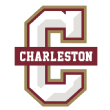
56. Charleston Cougars
Earl Grant's team will enter the NCAA tournament as one of America's hottest mid-majors. The Cougars have lost just one game since Jan. 13. They rode to the CAA championship and their first NCAA tournament appearance since 1999 via their collective aversion to committing turnovers (8.6 per game in the CAA tournament) and the talent of Grant Riller (18.7 PPG). They've won just by reaching this stage.

55. Iona Gaels
The Gaels love to push the pace -- 16 games with 73 or more possessions (the average is 68.5, per KenPom.com) -- and let the 3-pointers fly (38.8 percent from beyond the arc). And that's a great way to author a memorable performance in a thrilling opening-round game. Surrendering a 51.4 percent clip inside the arc, however, is a good way to go home after your first game.

54. Georgia State Panthers
Ron Hunter's squad is back in the NCAA tournament. Why? The Panthers finished the regular season with a top-10 mark in defense inside the arc, which they used to skate past UT Arlington in the Sun Belt title game on Saturday.

53. Bucknell Bison
Yes, the Bison return to the NCAA tournament for the second consecutive season, anchored by a trio of seniors. Before Zach Thomas, Nana Foulland and Stephen Brown carried Bucknell to a second consecutive Patriot League tournament title, they combined to score 53 points in a November road loss to UNC. But this is where the fun likely stops.

52. South Dakota State Jackrabbits
Mike Daum -- The Dauminator -- could secure All-America honors (23.8 PPG, 10.4 RPG, 85.6 percent on free throws, 42.1 percent of his 3-point attempts). But T.J. Otzelberger's squad showcased its depth and offensive talent (39.2 percent from beyond the arc, 27th in the country) in the Summit League championship game when the Jackrabbits extended their first-half lead over the Coyotes with Daum on the bench due to early foul trouble. With the right matchup, South Dakota State could spoil a high seed's dreams.

51. Buffalo Bulls
Nate Oats' squad has won six consecutive games, all by double digits. It's an impressive stretch of dominance for a Buffalo team that tussled with Cincinnati and Syracuse during nonconference play. The Bulls have four players averaging 14.1 PPG or more, and three players in their rotation who've made at least 39 percent of their 3-pointers.
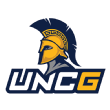
50. UNC Greensboro Spartans
In a matchup against Virginia earlier this season, UNC Greensboro registered 48 points. That's a respectable sum against America's top defensive team, as well as a number comparable to the 49 points North Carolina produced in a Jan. 6 loss to Virginia and more than the 36 points Clemson accrued in a Jan. 23 loss to the Cavaliers. The Spartans have held teams to worse than 33 percent from the 3-point line this year, too.

49. San Diego State Aztecs
In his first season as head coach, longtime Steve Fisher assistant Brian Dutcher has won nine consecutive games, a streak capped by two wins over Nevada and a victory against New Mexico in the Mountain West title game. The Aztecs humbled a top-10 Nevada offense twice in six days, proof of their improving defense.
Not impossible, but don't bet the mortgage on it
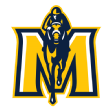
48. Murray State Racers
Matt McMahon's team is 14-1 in its past 15 games, dating to Jan. 11. Plus, Jonathan Stark is a former unrated recruit who turned himself into the Ohio Valley Conference's player of the year after recording 21.8 PPG and a 41 percent clip from the 3-point line. The Racers beat Horizon League champ Wright State by 19 points and lost to Auburn by four points this season. Respectable double-digit seed here.

47. New Mexico State Aggies
Last summer, Paul Weir left New Mexico State for rival New Mexico. On Saturday, New Mexico lost to San Diego State in the Mountain West Conference tournament title game. Meanwhile, NMSU beat Grand Canyon in the WAC tournament championship game, locking up an NCAA tournament berth in Chris Jans' first season. Zach Lofton (19.8 PPG, 39 percent from the 3-point line) leads a program that's playing great defense, the critical element in its wins over Davidson, New Mexico (twice) and Miami on a neutral floor.

46. Arizona State Sun Devils
It's never wise to exaggerate a team's Final Four hopes in the first six weeks of the season. But Arizona State's neutral-site win over Xavier on Nov. 24 and true road win at Kansas on Dec. 10 encouraged the possibility and the discussion that surrounded it. At the time, the Sun Devils were making nearly 60 percent of their shots inside the arc and 50 percent of their 3-pointers, an unsustainable success rate in a four-month regular season. Arizona State cooled off and now enters the NCAA tournament with one win in its past six games.

45. Syracuse Orange
Syracuse should buy a condo on the bubble. The Orange has lived there for years. Did they do some non-bubble things this year? Depends on how much you value the regular-season-ending win over Clemson. Did they do a bunch of bubble-like things? Yes. A road loss to Georgia Tech and a 19-point loss to North Carolina in the ACC Tournament didn't help their plight. If you decide to move Syracuse beyond the first round (weekend?) in your bracket, then you must believe in the powers of Tyus Battle and Frank Howard. We wouldn't recommend it.

44. St. Bonaventure Bonnies
The Bonnies, enjoying an RPI among the top 20, deserved an at-large berth after accruing a 9-4 record against Quadrant I and II squads. Jaylen Adams (19.8 PPG, 47 percent from the 3-point line) and Matt Mobley (18.5 PPG, 39 percent from 3) comprise one of the best backcourts in the country.
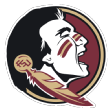
43. Florida State Seminoles
Leonard Hamilton's team can claim wins over Florida (road), North Carolina (home), Clemson (home) and Miami (home) on a résumé without any bad losses. This team boasts a collection of strong, athletic wings and forwards 6-foot-6 and taller. FSU finished the regular season with a 4-5 record in its previous nine games before an opening-round loss to Louisville in the ACC tournament, which failed to escape a double-digit seed. It's one of those imbalanced squads with the personnel to beat any opponent. It also has the porous defense (FSU surrendered 80 points or more nine times this year) to collapse in any matchup.

42. Oklahoma Sooners
Here's the reality: Trae Young isn't shooting the ball the way he did in the first three months of the season. It's also important to note few players in the history of the game had Young's hot hand when they were freshmen. He also has carried a tremendous burden for a team that won 11 games last year. Without Young on the floor, per hooplens.com, Oklahoma has registered a meager 0.97 points per possession, a mark that would position the Sooners at No. 322 in unadjusted offensive efficiency, per ESPN Sports Analytics. Is there a chance Young, the nation's leader in points and assists, could go Kemba Walker on the 2018 NCAA tournament and skate to the second weekend or beyond? Yep. But it appears this team might have peaked before February's slide.

41. NC State Wolfpack
A few years ago, Kevin Keatts was a high school coach searching for a path to the collegiate ranks. Now, he's the first-year coach at NC State who just led his squad to the NCAA tournament, something Mark Gottfried couldn't do with Dennis Smith Jr. on the roster last season. Keatts' first-year résumé includes victories over Arizona, Penn State, Duke, Clemson and North Carolina. The last-minute NCAA clearance of Braxton Beverly (9.8 PPG), who transferred from Ohio State after Thad Matta's firing in June, has enhanced the roster. Omer Yurtseven, a 7-footer who had made 22 of his 43 3-point attempts, is the one who spaces the floor and demands double-teams.

40. Kansas State Wildcats
With a top-50 BPI and multiple wins over those stubborn middle-of-the-pack teams in the Big 12, America's best league pound-for-pound, Bruce Weber's squad grabbed a spot in the field of 68. You just have to wonder how healthy Kansas State will be in the NCAA tournament. Dean Wade (16.5 PPG) missed the Big 12 tournament semifinals with a foot injury. And Barry Brown (16.0) suffered an eye injury that limited him to just one minute in that loss to Kansas on Friday.
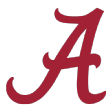
39. Alabama Crimson Tide
After his team's buzzer-beating win over Texas A&M in the SEC Tournament, Alabama's Avery Johnson said the Crimson Tide can "beat anyone" with the star freshman. And that doesn't like a crazy idea when you consider the way the future lottery pick has played in recent weeks. If Bama, a bubble team as recently as Friday morning, intends to shock the field with a run, it will need Sexton to don a cape and play superstar-level basketball. He's capable.
It's not crazy ...

38. Loyola-Chicago Ramblers
Let's remove this mid-major's name and league (Missouri Valley Conference) for a moment. Instead, let's discuss a team ranked 23rd in adjusted defensive efficiency (KenPom.com) -- a broad metric that measures a team's defensive aptitude according to the competition it has faced -- and the No. 25 offense against man-to-man defense (Synergy Sports). This team also has a road win at Florida, too. And it makes 40 percent of its 3-pointers. Sound like a sleeper to you?

37. Texas Longhorns
The Longhorns have faced more adversity than most teams. Andrew Jones was diagnosed with leukemia this season. Eric Davis has been held out of games following a Yahoo! report that tied him to an ongoing FBI investigation. And a toe injury forced Mohamed Bamba (12.9 PPG, 10.4 RPG, 3.7 BPG) to miss three of UT's past four games. Still, Shaka Smart's squad beat West Virginia in overtime last week. They're a resilient bunch.
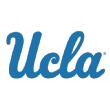
36. UCLA Bruins
Lonzo Ball's departure opened up the floor for Aaron Holiday to earn a place on the all-Pac 12 first team and the league's all-defensive team. Still, it's not wise to go overboard with praise for a team that beat Kentucky and Arizona but surrendered 94 points to Oregon and got swept by Colorado. They're as uneven as last season's Bruins, and they won't have Ball to bail them out in this NCAA tournament.

35. Davidson Wildcats
The Wildcats made 16 3-pointers and beat St. Bonaventure, a bubble team, in the semifinals of the Atlantic 10 tournament. That was no fluke. Davidson and its highly effective offense entered Sunday's conference tournament title game with a pair of victories over both St. Bonaventure and Rhode Island this season.

34. Nevada Wolf Pack
The best way for any good team to ruin its shot at a respectable top-six seed and fall into a more dangerous opening-round game is to lose to a team without an at-large argument by 17 points in the semifinals of your conference tournament. This is arguably the most imbalanced team in the field, a Nevada squad with a top-10 offense and an MIA defense that's rated below Bradley, Saint Peter's and Northeastern on KenPom.com. Hard to trust the Wolfpack. They're definitely worth watching, though.
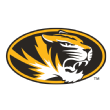
33. Missouri Tigers
All seemed lost when Michael Porter Jr. suffered a back injury and played just two minutes in the team's season-opener against Iowa State before surgery shut him down for the rest of the regular season. Cuonzo Martin still led his team to an at-large berth. He has a team that has connected on nearly 40 percent of its 3-pointers and enjoyed the surprising surge of Porter's younger brother, Jontay (10.1 PPG, 6.8 RPG). Michael Porter Jr. is a projected top-10 pick who struggled in his return during Missouri's SEC tournament loss to Georgia (5-for-17 in 23 minutes), but the Tigers have the potential to exceed their seed with Porter now available.

32. Seton Hall Pirates
Well, the Pirates have made more than 70 percent of their free throws in their past six games (4-2). Earlier this season, they were one of the worst teams in America at the free throw line. They've improved, a critical factor in their ability to win close games. Average free throw shooting contributed to a four-game losing streak in February. The same squad that had the talent to beat Texas Tech in a nonconference game -- Desi Rodriguez finished with 24 points and Seton Hall became the only team all season to score more than 84 points against the Red Raiders -- also had ample fundamental weaknesses to lose to Georgetown and Rutgers.
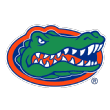
31. Florida Gators
Any squad with four shooters who've connected on more than 39 percent of their 3-point attempts, wins over Cincinnati and Gonzaga and a speedy lineup full of players who zoom up the court and set up kick-outs galore can make noise in the NCAA tournament. The Gators ended their regular season on a three-game win streak (Auburn, Alabama, Kentucky). Whenever they've been just ordinary or worse from beyond the arc, however, they've lost to Ole Miss, Vanderbilt and South Carolina.

30. Providence Friars
Give the Friars credit. Ed Cooley knew his team entered February without any guarantees of an at-large berth, so his program approached the final stretch of the season with that reality in mind. The result? A 5-4 finish to the regular season -- featuring wins over Villanova and Marquette -- before an opening-round win over Creighton in the Big East tournament and another win in the semifinals against Xavier. Hey, bubble teams: That's how you secure a trip to the NCAA tournament.
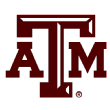
29. Texas A&M Aggies
It has never been a question of talent with Billy Kennedy's team. The Aggies' discipline, or lack thereof, has been the challenge all season. This squad beat West Virginia in its season-opener without Robert Williams, a projected first-round pick in this summer's NBA draft. The good news? The Aggies had enough size and athleticism to beat Kentucky by double-digits in February. The bad news? They also lacked the composure to steer Collin Sexton off course as he dribbled up the court to hit a game-winner at the buzzer in the SEC tournament. They're more likely to play below than above their potential in the postseason.
Now it gets interesting
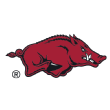
28. Arkansas Razorbacks
Daniel Gafford (2.3 BPG) is Mike Anderson's best NBA prospect since Bobby Portis. His team has hovered near the 40 percent mark from beyond the arc all season, too. It's still unclear if this Razorbacks squad is anything more than a solid SEC squad without an abundance or signature wins. Sure, they have victories over Oklahoma and Tennessee, but they've also suffered eight double-digit losses.

27. Butler Bulldogs
Last summer, LaVall Jordan received a life-changing phone call and offer from his alma mater: Butler wanted him to replace Chris Holtmann. The national projections for the Bulldogs quickly shifted toward pessimism after he joined the team. That never flustered Jordan, who grew closer to his squad during an offseason overseas trip. When the Bulldogs overcame a double-digit deficit in the final minutes of a win over Ohio State in the PK80, Jordan pointed to the team's bond and selfless attitude. Butler has encountered other clutch situations since then. It's a tough way to live. The Bulldogs are 4-3 in games decided by five points or less this season. That's the uncertainty they hope to avoid in the NCAA tournament.

26. Virginia Tech Hokies
Justin Robinson (13.8 PPG) leads a collection of five Virginia Tech players averaging double figures. They're tenacious. Their tournament profile is anchored by wins over Virginia, Duke and UNC. The Hokies, though, did squander a 21-point lead in the first round of its ACC tournament loss to Notre Dame. So which group will show in the NCAA tournament? We'll see. The Hokies have struggled against squads undaunted by their athleticism and equipped to exploit the limited size on their roster (see: getting swept by Louisville and Miami).
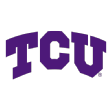
25. TCU Horned Frogs
Two years ago, Pitt -- and its fervent fan base -- decided Jamie Dixon had underperformed as head coach, despite a resume with 11 NCAA tournament appearances, two Sweet Sixteen runs and an Elite Eight appearance. All he has done since arriving at TCU is win the NIT last year and coach the Horned Frogs to their first NCAA tournament berth since 1998, the latter without the services of injured guard Jaylen Fisher for the past two months. But to make this more than just a good story, they'll have to be better than the 7-7 team with unreliable defense that we've watched over the past 14 games.
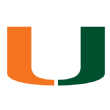
24. Miami Hurricanes
Teams must thrive in adversity to win a national title. Miami encountered the loss of a key player and still rolled into the postseason. The foot injury Bruce Brown (11.4 PPG, 7.1 RPG) suffered in January cost him the final 10 games of Miami's regular season. The Hurricanes still finished 4-1 in their final five matchups, a stretch that included a surge from freshman NBA prospect Lonnie Walker IV (14.0 PPG, 42 percent from the 3-point line in those five games). Still, it always seems as if the Hurricanes are a play away from victory or doom. Their final four games of the regular season, all wins, were decided by a combined eight points.
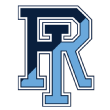
23. Rhode Island Rams
The Rams' ability to force turnovers and limit their own turnovers is how they've minimized the impact of their subpar offense throughout the season. That's why Saturday's win over Saint Joseph's in the Atlantic 10 semifinals was such an inspiring effort for the Rams. In a come-from-behind victory, the Rams made 45 percent of their 3-pointers and retrieved nearly half of their misses. Dan Hurley has five veterans who will scrap against any opponent. But the Rams might lack the talent to reach the second weekend.
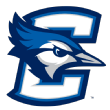
22. Creighton Bluejays
The Bluejays have not resembled the offensive blitzkrieg and defensive force they'd become when 6-foot-9 sophomore Martin Krampelj (11.9 PPG, 8.1 RPG) was healthy, before he suffered a torn ACL in January. Yes, they beat Villanova in February without him. But that was an anomaly. Creighton enters the NCAA tournament with a 3-6 record in its past nine games against Division I teams. Marcus Foster (20.3 PPG, 42 percent from the 3-point line) is one of America's best guards. Khyri Thomas is a future pro. Still, they're incomplete without Krampelj and vulnerable for an early upset.

21. Houston Cougars
Kelvin Sampson's team crushed Arkansas by 26 points in nonconference play. The Cougars beat Providence by double-digits, too. They embarrassed Wichita State in a 14-point win. They also beat Cincinnati. And that's why Rob Gray (18.1 PPG) and the Cougars might ruin brackets all over America during the first weekend.
The serious contenders

20. Ohio State Buckeyes
At one point this season, Chris Holtmann had eight scholarship players. In June, after leaving Butler to replace Thad Matta at Ohio State, Holtmann just hoped he would have enough players to fill a roster. But the national coach of the year candidate has turned the shorthanded Buckeyes into a Big Ten contender and top-25 squad, while helping Keita Bates-Diop (19.4 PPG, 8.8 RPG, 1.7 BPG) develop into the Big Ten's player of the year and a potential first-round pick in this summer's NBA draft. However, the Boilermakers are 2-3 in their past five games and they lost to Penn State, a bubble team, three times. Still, the Buckeyes haven't lost to a bad team all season.

19. Clemson Tigers
This is where Clemson will miss Donte Grantham most. Yes, the Tigers defeated North Carolina without their No. 2 scorer -- a critical, 6-foot-8 forward -- but they finished the regular season 2-4 in their past six games. Clemson's postseason push will rely on its defense, solidly locked into the top 10 throughout the year on KenPom.com. Offensive production -- Clemson made 56.6 percent of its 2s with Grantham on the court and 45.4 percent without him (hooplens.com) -- is the biggest hurdle to overcome if the Tigers want to be a formidable second-weekend team.
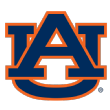
18. Auburn Tigers
We've witnessed the sudden decline of multiple teams that have suffered late-season injuries, which altered their respective postseason outlooks. Put Auburn in that category. They're 2-4 in their past six games, all of which involved the full or partial absence of Anfernee McLemore, a 6-foot-7 sophomore who had been the team's top shot-blocker (2.7 BPG) before he suffered a horrific ankle injury in a February road loss to South Carolina. Now, Horace Spencer, a 6-8 junior, is Auburn's most vital big man. He has fouled out twice in two of the team's recent losses, despite playing a combined 25 minutes in those games. The Alabama loss in the SEC tournament (Collin Sexton scored 31 points) should scare all Auburn fans because NCAA tournament opponents will just attack the rim and dare this undersized, shorthanded squad to stop them.
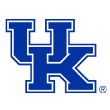
17. Kentucky Wildcats
This is not the John Wall/DeMarcus Cousins Kentucky team of 2009-10. It ain't the Anthony Davis squad that won it all in 2012. It's not the 2014-15 squad that finished the season 38-1, either. It's much closer to the 2013-14 team that entered the SEC tournament with a 3-4 record in its previous seven games. That team made an improbable Final Four run. That team, however, also had two certified pros (Julius Randle and Willie Cauley-Stein) who are averaging double figures in the NBA right now, and those Wildcats were also better rim-protectors. This current version of the Wildcats, however, has a similar physical and athletic profile. They're a group of athletes who will lose any 3-point shootout (see: last weekend's Florida loss). Still, they are long, athletic and a handful for most opponents that can't neutralize their personnel with an effective offense and shot-blockers who can challenge the Wildcats in the paint. What does all of this mean? We don't know. And that has been the issue all year with the current collection of Wildcats. Maybe they're gone after one game. Maybe they're still hanging on three weeks from now.
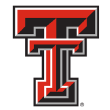
16. Texas Tech Red Raiders
Texas Tech, the Virginia of the Big 12, climbed into contention in Big 12 play with a defense that has held opponents to a subpar 54.3 percent clip (hoop-math.com) at the rim, 25th in the country. Its biggest concern has been the health of its roster. Zach Smith, a 6-8 forward, missed multiple games with a broken foot this season. Keenan Evans, an All-America candidate, has suffered from turf toe. During a late four-game losing streak last month, Evans missed one game and finished a combined 3-for-19 in three other losses. The good news? The 6-3 guard averaged 24 points in the two games that followed that streak. A healthy Evans and a strong Texas Tech defense can win anywhere.

15. Wichita State Shockers
This is arguably Gregg Marshall's deepest squad. He has six players who are averaging 8.0 PPG or more. The 2012-13 team that reached the Final Four didn't even have that depth. The "next man up" concept is no coaching cliché for the Shockers. In Wichita State's final eight-game stretch of the regular season, five different players led the Shockers in scoring. Plus, they beat Cincinnati on the road. Marshall has a 6-4 point guard named Landry Shamet who could crack the first round of this year's NBA draft. He's the catalyst for Wichita State's top-five offense. Its sub-100 defense should encourage caution as you make critical decisions about Wichita State in your brackets, though.

14. Cincinnati Bearcats
The only team that has consistently played better defense than Cincinnati this season is Virginia. Mick Cronin's team fits the image of the tough, ruthless squads full of aggressive defenders that have anchored Cincy's most memorable teams. The Bearcats held Wichita State to just 61 points in the regular-season finale that sealed the American Athletic Conference title outright. On offense, however, the Bearcats are "average" against zones, per Synergy Sports, a grade attached to the limited shooters and offensive innovators the Bearcats possess. They'll need Jacob Evans and Gary Clark to carry the offensive load if they hope to reach the first Elite Eight of Cronin's tenure.

13. West Virginia Mountaineers
West Virginia is not the type of opponent you want with limited time to prepare in a single-elimination tournament. That only makes it easier to see West Virginia gliding through the first weekend. Against Baylor in the Big 12 tournament quarterfinals, Bob Huggins' aggressive squad forced 22 turnovers in a win. Five days earlier, the Mountaineers forced 14 turnovers in the regular-season finale against Texas but failed to convert those turnovers into sufficient offense because they made just 27 percent of their 3-pointers in a loss. Prudent opponents who can limit their turnovers and stall Jevon Carter can beat the Mountaineers. With such a short turnaround, this is not a team you want to see.

12. Michigan Wolverines
One day, John Beilein will get credit as one of the top coaches in the country. He has sent multiple unheralded prospects to the NBA. He led Trey Burke & Co. to the Final Four in 2013. This season's finish is as impressive as any feat during his tenure. The Wolverines enter the NCAA tournament riding an 11-game win streak, punctuated by victories over Purdue and Michigan State on their way to the Big Ten tournament title. They're ranked 14th in the BPI. Mo Wagner, a 6-foot-11 forward who made 42 percent of his 3-point attempts, is a terrible matchup for any squad.

11. Tennessee Volunteers
There is a lot to like about Rick Barnes' squad. The Vols own nonconference victories over Purdue and North Carolina State. They swept Kentucky in the regular season. They're reliable from beyond the arc (38.1 percent). The only teams ahead of them in KenPom.com's adjusted defensive efficiency ratings are Cincinnati and Virginia. Admiral Schofield deserves more mainstream attention, too. He finished his regular season with three consecutive performances of 23 or more points. Anything short of the second weekend is an underachievement for the Vols.
Your future national champion is (probably) here

10. Purdue Boilermakers
In 2010, Matt Painter had a squad that was chasing a top seed in the NCAA tournament when Robbie Hummel suffered a torn ACL just before the postseason. Eight years later, Painter again guides a diverse, deep Purdue squad with championship potential. Isaac Haas is a 7-foot-2 monster who is reliable at the free throw line (81 percent). Carsen Edwards and Vincent Edwards are both All-America candidates. The Boilermakers have convincing wins over Arizona and Butler and a 2-1 record against Michigan, arguably the hottest team in the country. The biggest tests for Purdue will come against teams that play legit small ball with mobile big men who can hit shots from the perimeter, forcing Haas into defensive mismatches off screens. That said, few opponents can handle Purdue at its best.

9. Xavier Musketeers
Yeah, Chris Mack's team doesn't want to see Villanova again. But who does? The Musketeers lost to the Wildcats by 40 points combined in two regular-season meetings. Villanova is one of the handful of squads that have stopped this potent Xavier team, which enters the NCAA tournament with wins over Cincinnati and Baylor along with a Big East regular-season title. Trevon Bluiett (19.5 PPG, 42 percent from the 3-point line) is an All-American who ignites an offense (84.0 PPG) ranked in the top-10 in efficiency. Defensive inconsistency has cost Xavier a few winnable games against Providence, but the bulk of their opponents have been overwhelmed by their offensive firepower. That probably won't change in March.
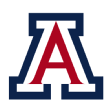
8. Arizona Wildcats
Since 2001-02, no team has played defense approaching the 90s in efficiency -- Arizona has surrendered 80 points or more in nine games this season -- and won a national title. Every champion in that stretch has ended the season with a top-30 defense and most have claimed a spot in the top 10. No team maybe since LSU in the early 1990s -- Shaquille O'Neal ring a bell? -- has had a big man with Deandre Ayton's combination of balance, talent, size, strength, burst, skill and IQ. Many on the East Coast haven't stayed up late to actually watch the 7-foot-1 freshman play. Those who've missed him might watch him dominate the NCAA tournament and lead Arizona -- steeped in controversy due to an ESPN report that alleged Sean Miller arranged a $100,000 payment to secure Ayton -- all the way to the Final Four. He's that good.

7. Gonzaga Bulldogs
A year ago, Mark Few's team -- with a lineup that featured lottery pick Zach Collins and veteran Przemek Karnowski -- rumbled to the national title game, where it lost to North Carolina. Losing those players did not diminish Gonzaga's national title hopes this season. The Bulldogs are a different team with more versatile athletes. Rui Hachimura is a 6-foot-8 forward averaging 11.3 PPG. Johnathan Williams, a 6-9 forward, is equipped to guard any position. Killian Tillie is a 6-11 NBA prospect who has made 50 percent of his 3-pointers. They also boast a defense that has held opponents to 43.4 percent inside the 3-point line, the No. 6 mark in the nation.
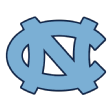
6. North Carolina Tar Heels
Roy Williams is chasing his third consecutive trip to the national title game. Two years ago, the Tar Heels lost on a Kris Jenkins buzzer-beater. In 2016-17, the Tar Heels outlasted Gonzaga in a rough championship win in Glendale, Arizona. After losing a fabulous frontcourt, a step back would have made sense for UNC. In late February, the Tar Heels lost to Miami on a wild buzzer-beater and couldn't stop Duke in the second half of their second regular-season affair. Beyond those moments, however, North Carolina was arguably the best team in America that month. Luke Maye leads a squad that still collects an enormous number of offensive rebounds. Yet UNC's work from beyond the arc (39.5 percent allowed in ACC play and 35.7 percent success rate on offense) could seal its fate in the NCAA tournament.

5. Kansas Jayhawks
The Jayhawks established a new Division I record by winning their 14th consecutive Big 12 title, a streak that started two years before the release of the first iPhone in 2007. Bill Self is using a system of four guards and a big man this year, a trendy approach that has bolstered a typically astute offensive unit while generating the worst defense of Self's tenure. Udoka Azubuike, their most important asset in the paint, missed the conference tournament with a sprained MCL. They need him- and they need him healthy. A team led by Wooden Award candidate Devonte' Graham (17.3 PPG, 7.3 APG, 42 percent from the 3-point line) is capable of bombarding opponents with 3-pointers and fast-break buckets. It is the defense that should concern you.

4. Michigan State Spartans
Another stacked Tom Izzo team. Another shot at Michigan State's -- and the Big Ten's -- first national title since 2000. Izzo has stars. Miles Bridges is a 6-foot-7 lottery pick who made 39 percent of his 3-pointers in Big Ten play. Jaren Jackson Jr., a 6-foot-11 forward who can hit shots from anywhere on the court, won the league's defensive player of the year award. Nick Ward leads America in offensive rebounding rate. Plus, the Spartans have made 41.3 percent of their 3-pointers and they play the nation's best defense inside the arc. They bring a bunch of 6-9 vets off the bench. If Cassius Winston can lock up opposing wings and limit his turnovers (12.6 PPG, 6.8 APG), this balanced squad might win six games and stand atop the dais in San Antonio next month.

3. Duke Blue Devils
Here's what we learned in Duke's win over North Carolina in late February: If the Blue Devils and the rest of field play their best basketball in the NCAA tournament, Duke will probably be the last team standing in San Antonio. In the second half of that UNC win, the Blue Devils outscored the Tar Heels 49-29. Think about that. North Carolina could earn its third consecutive trip to the Final Four. And Duke just toyed with Roy Williams' squad after the break. Marvin Bagley III is an impossible matchup, and Grayson Allen is unstoppable right now.

2. Virginia Cavaliers
We'll start with the optimism: Virginia is playing some of the greatest defense we've ever seen. Rhode Island? Fifty-five points against the Cavaliers. Virginia Tech? Fifty-two. Duke? Sixty-three. North Carolina? Forty-nine. The Cavs have stalled tourney teams with a defensive aggression that could set a record in the KenPom.com era. So what's different from past years? Well, that's the question Virginia must answer in the NCAA tournament. Tony Bennett has sent uber-efficient and effective squads to the postseason in past years. Still, he has just one Elite Eight appearance in his tenure. This year, he doesn't have a Malcolm Brogdon or Justin Anderson on this roster to carry his offense through rocky chapters in the postseason. Should Virginia reach the Final Four and contend for the title? Of course. Will it? That's the question surrounding a magnificent program that's still aiming for a trip to the Final Four to accompany another impressive regular season.

1. Villanova Wildcats
You know what's interesting? This Villanova team has four players with legit NBA aspirations (Omari Spellman, Mikal Bridges, Jalen Brunson and Donte DiVincenzo). When folks discuss their national title aspirations, however, they focus on their chemistry and the coaching prowess of Jay Wright, the Italian suit king. This Wildcats squad is clearly one of America's most talented teams, though. When they heat up, no team in the country can match them in a shot-for-shot duel. They beat Xavier, a possible top seed, by a combined 40 points in two regular-season affairs. If they find a rhythm in March, the Wildcats might sail to their second title in three years.
